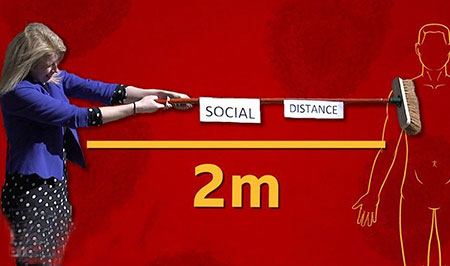
Highlights of the book Buyology for a Coronavirus World
A few months ago I received for free the book Buyology for a Coronavirus World by Martin Lindstrom, which is a second part of the book Buyology, truths and lies of why we buy.
Lindstrom is a Danish author, Time Magazine Influential 100 Honoree, who has written a series of straightforward, practical marketing books based on research, experience, and common sense.
In this second part of Buyology, the focus is on the pandemic and its effects on people’s behavior, and the changes that are expected.

And he states in the introduction “With people’s confidence about their health at its lowest point since the Great Depression of the 1930s, what product, other than mandatory personal protective equipment and food, can beat all odds and not only survive, but thrive, during the global pandemic?
And, he adds, there has been a worldwide increase in the purchase of sex toys, sales of toilet paper in the U.S. grew 60% over the previous year, and sales of greeting cards, lottery tickets and cigars and board games are up considerably. Firearms purchases increased, and Netflix grew by 16 million subscribers in just three months.
He mentions that it is all about self-preservation, where the true value of commodities (physical goods that are basic components of more complex products) has been temporarily lost.
Finishing off: “Welcome to the Coronavirus Pandemic”.

It tells us that the cerebral amygdala is in overdrive, and it should be remembered that it is the cerebral amygdala responsible for processing emotions, such as fear, which has invaded most people in the world.
It reminds us that we are waiting for the green light to return to our old habits and routines. But apparently that is not going to happen any time soon. And in turn, that the state of mind rippling across the planet is fear and anxiety.
Feelings of anguish and hopelessness are amplified by the thought that one could be attacked by the virus.
And it would not only be getting sick, but being excluded from social groups because of the risk.
Today, people are more afraid of the proximity of other people, sneezing and body fluids.

Well, and why are we talking so much about this: because it is the basis for understanding the economy of fear, and how it has disrupted everyone’s lives, and how it is expected to change people’s interests, needs and habits, and therefore their way of acquiring goods and services.
En el capítulo ¿Me estoy volviendo loco? explica que el confinamiento debido a la pandemia hace que la mayoría de la gente engorde, se vuelva más violenta y se canse de no hacer nada.
That the habits they had from the work routine stopped working, which has caused their life to be somewhat blurred, less clear.
He says he has interviewed people who are eating breakfast at 2 or 3 a.m., working on Sundays, or attending virtual meetings in their underwear.
And all this happens while avoiding handshakes, meetings with friends or other people, washing their hands every one or two hours.
They obsessively clean doorknobs, toilet keys, car handles and steering wheels. Not to mention food cans and milk cans. All at the same time.
A Colombian blog specialized in content highlights from the book Buyology:
“We will revisit our wish list and ask ourselves ”What do I want to accomplish with my life?” as we rediscover what gives meaning to our purpose and begin to look for new options. In fact, when the pandemic is over. The stock market and oil stocks begin to rise, I expect consumers will become even more hesitant and uncertain about spending every day, more than we already are today (we will ask ourselves, can I?).”

And continues:
“Is this the right product, should I buy this or that? And instead, they will save up for higher-priced items, but ones that help them better understand why we exist. I think as happened after the Great Depression of 1930, for those who lived through it, this pandemic is going to cure us of chronic overspending for a long time to come.”
And regarding business quotes:
“We have the opportunity to reevaluate our spending, our relationships, our priorities, and it will require a painful corrective to our business, a principled reorganization.”
Now we are forced to change, to improve, to find more creative ways to approach consumers.
Change is what is coming.
Lindstrom argues that there have been other situations in the world that have caused people to change, but they have not been as profound or as long in time as the COVID-19 pandemic, so he anticipates that there will be industries that will be more affected.
Especially those that involve people coming together, such as buffets, cinemas or concerts, and there will be new concepts to replace them.
And the challenge lies in the fact that the leaders of companies and businesses will have to make assumptions about how the changes in their industries will take place, and in the face of this, propose new products, services, or a combination of these that adjust to the new needs and interests of people.
If people feel misunderstood in their desires, they will simply not be interested, there will be no sales. But above all, failure will be the responsibility of companies that do not understand and adapt to the new dynamics of the economy.
Closing
Significant changes are coming in the world, COVID-19 and social constraints are leading to new ways of interaction, of adapting to new values, interests and behaviors of people.
Companies are left with the task of understanding and planning new ways to support survival and success.
Download the book Buyology for a Coronavirus World
















